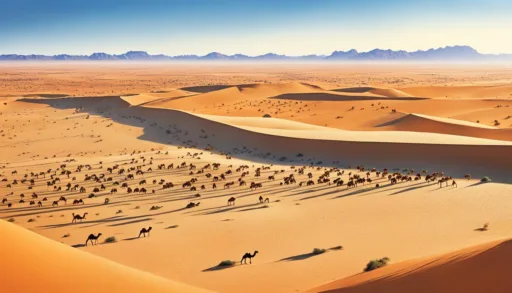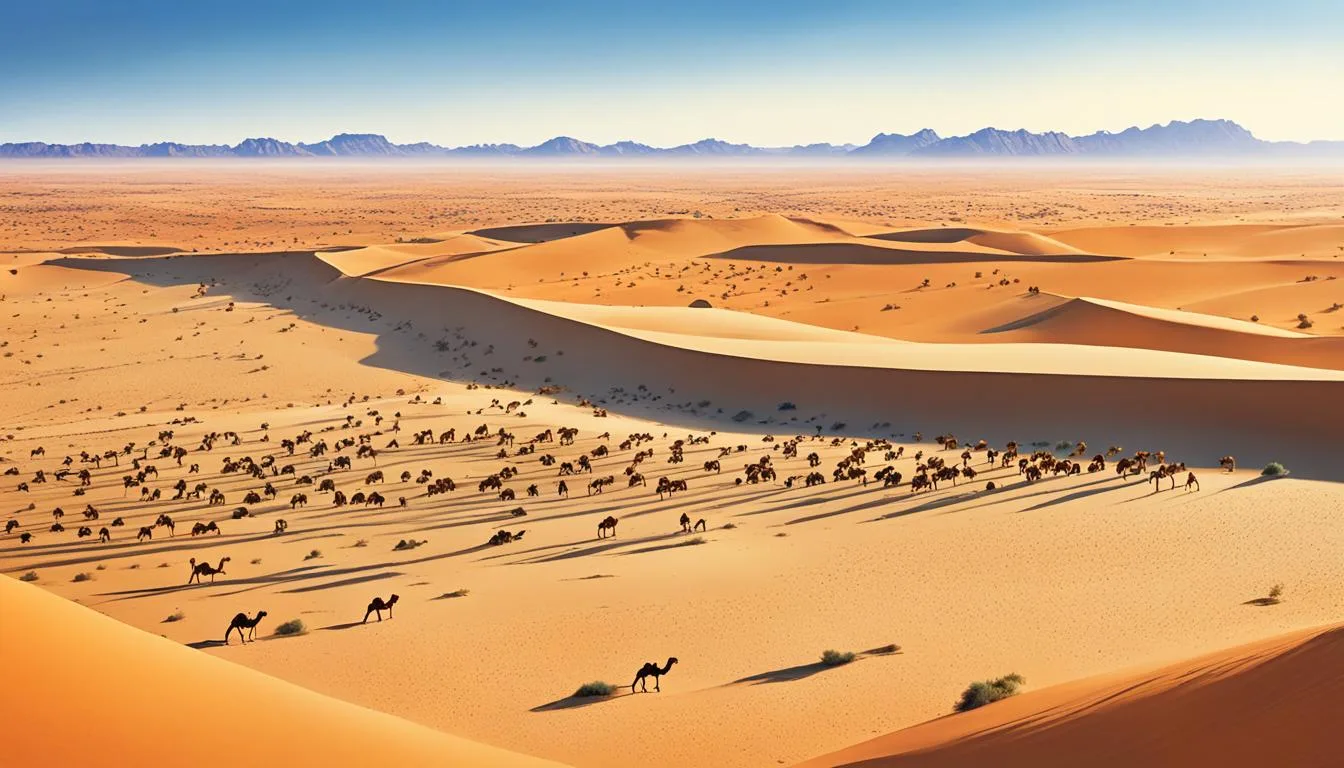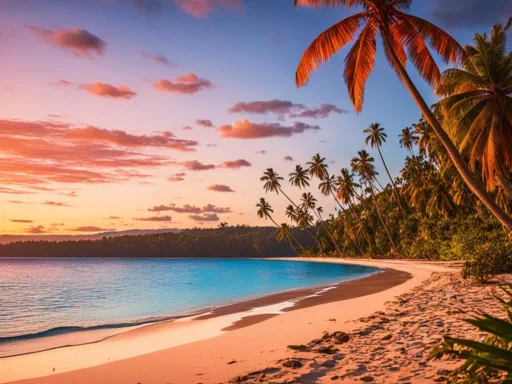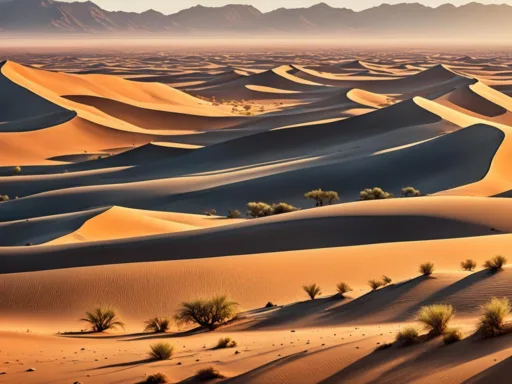Embarking on a journey to Niger often conjures images of infinite Saharan landscapes and the allure of a vibrant culture steeped in history. Yet the secret to the most enriching experience lies in timing your Niger vacation to coincide with when the beauty of the Sahara is most inviting and the cultural expressions are most vibrant. How then does one pinpoint the best time to visit Niger for an unforgettable adventure? Grasping the rhythm of the Niger travel season can transform a standard trip into a deep exploration that resonates with the pulse of this captivating land.
Whether motivated by the desire to witness the stark beauty of one of the world’s hottest countries or to immerse oneself in age-old festivals, understanding when to discover Niger in the right season is essential. The interplay of natural phenomena and cultural festivities crafts a unique canvas that is best appreciated at certain times of the year. This guide invites you to traverse this canvas and uncover the optimal window for your Nigerien odyssey.
Key Takeaways:
- Identifying the ideal travel season for an authentic exploration of Niger.
- Strategies to experience the Saharan beauty at its most accessible.
- Insights into how climate influences the cultural vibrancy of Niger.
- Planning your trip to partake in traditional festivities and daily life.
- The importance of schedule flexibility for a truly unforgettable adventure.
Understanding Niger’s Climate for Optimal Travel Planning
Embarking on a journey to Niger means stepping into an environment ruled by two distinct climate zones: the arid expanses of the Sahara in the north and the more temperate Sahel in the south. Get acquainted with Niger’s climate tips and prepare to navigate the country’s seasonal swings, ensuring your adventure unfolds under the most favorable skies.
Climate Zones: From Sahara to Sahel
The dramatic divide between the dry, relentless Sahara and the marginally greener Sahel climate is a fundamental aspect of travel planning. The Sahara, notorious for its sparse rainfall and sizzling temperatures, dictates a rugged itinerary, often preferred by those seeking the extreme allure of the desert. On the other hand, the Sahel zone serves up a gentler clime for your travels with its milder weather patterns.
Seasonal Variations and What They Mean for Tourists
Seasonal variations offer critical cues on when to go to Niger. Throughout the nation, rainfall is a fleeting phenomenon, but these rare showers transform landscapes, revealing the verdant potential amid parched soil. The temperature fluctuates between day and night, and from season to season, challenging even the best-laid travel plans.
- In the Sahara, temperatures in the warm season can soar above 40°C (104°F), making early morning or late evening the optimal times for exploration.
- In contrast, the Sahel climate, while still hot, can be more agreeable, especially during the cooler months from October to February.
Armed with an adept Niger weather guide, it is possible to steer through these climate zones and seasonal variations for optimal travel planning that aligns with your comfort and interest. Whether seeking the heat of the desert or the relative lushness of the Sahel after seasonal rains, navigating the climate is key to unlocking Niger’s treasures.
Remember, proper timing is not just about good weather—it’s about making sure that the local conditions enhance your experience. By traveling during cooler periods or aligning your visit with the brief rains, you not only ensure your comfort but also maximize your chance to witness Niger’s landscapes in their most favorable light.
Best Time to Visit Niger: Balancing Weather and Cultural Events
When planning your Niger travel season, the ideal time for a Niger trip is a period that offers both comfort and cultural immersion. Between the months of October and April, travelers can enjoy moderate temperatures that make traversing Niger’s magnificent landscapes not only possible, but pleasant. This window of opportunity is before the onset of the harmattan winds, which can bring intense dry heat, hampering the travel experience.
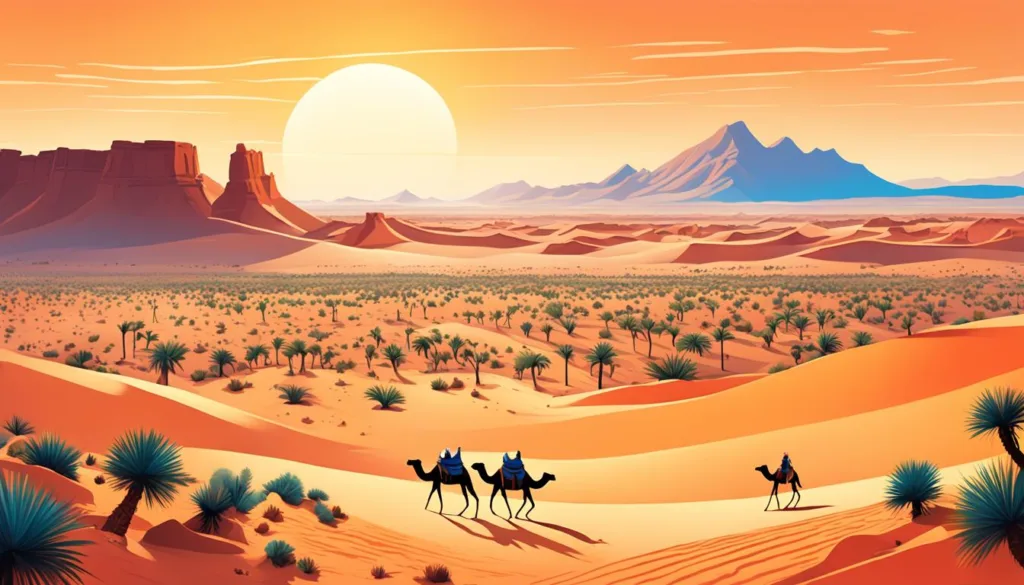
During these months, especially in the Sahelian southern regions, the calendar brims with vibrant cultural events that showcase the rich traditions and customs of local communities. Visitors gain a front-row seat to festivals that are central to Niger’s cultural fabric, enhancing their travel experience with authentic, memorable moments.
For those interested in witnessing the transformation of the landscape, the season stretching from July to September unveils a different aspect of Niger. The southern regions, usually arid, become lush with life following the rainy season. The choice of when to visit is thus a delicate balance between the weather and cultural exploration balance.
- Moderate Weather (October to April)
- Perfect for savannah and desert tours.
- Ideal for participating in national festivals and cultural exchanges.
- Watch the arid landscapes blossom with greenery.
- Experience the agricultural heartbeat of the nation.
In summary, pinpointing the best time to visit Niger involves an intricate dance between climate factors and the desire to engage with the nation’s heritage. Whether your aim is to explore the markets, partake in the celebrations, or simply soak in the diverse atmospheres of Niger’s environment, timing your visit during these optimal months will undoubtedly enhance your journey.
Must-See Destinations Within Niger’s Varied Landscapes
Planning your Niger vacation timing is essential to fully appreciate the vast and diverse terrains that this fascinating country offers. To truly discover Niger in the right season, one must consider the myriad of landscapes, from its bustling cities to the tranquility of its desert expanses. Each region presents a unique side of Niger’s beauty and cultural heritage, promising an unparalleled travel experience.
The Enigmatic Beauty of the Sahara Desert
The Sahara Desert, a vast canvas of golden dunes and clear blue skies, is the heart of the Sahara’s enigmatic wonder. As one of the must-visit destinations for any traveler, the Sahara provides an opportunity to witness the grandeur of nature in one of the most iconic deserts in the world. Whether exploring the dunes on camelback or spending a night under the stars, the Sahara experience is truly like no other.
The Historical Lure of Agadez and the Air Massif
Agadez, with its rich history and close proximity to the captivating Air Massif, offers an enticing glimpse into Niger’s past. The city itself serves as a gateway to the Sahara, showcasing fascinating architecture and centuries-old culture. Meanwhile, the Air Massif stands as an austere natural sculpture, its rugged terrains providing a stark contrast to the rolling sands nearby. Together, they form an essential portion of the varied landscapes that make a Niger journey so rewarding.
Niamey’s Urban Pulse and Its Multiethnic Charm
Niamey, the capital city of Niger, pulses with life, weaving modernity with tradition. It is a place where a multiethnic charm colorfully springs forth in every bustling market and street corner. The vibrancy of its social life, together with unique culinary offerings, provides a contrasting experience to the quiet expanse of the Sahara. In Niamey, the spirit of Niger comes alive, inviting travelers to partake in its story and make it a part of their own.
With such varied landscapes, from Niamey to Agadez, and the Sahara to the Air Massif, your adventure caters to a plethora of interests and desires. When you discover Niger in the right season, your experiences will not only resonate with the beauty of the land but also the warmth of its people and their rich cultural mosaic.
Niger’s Cultural Heritage: Celebrations and Daily Life
Delving into the heart of Niger reveals a vibrant Cultural Heritage marked by myriad traditional festivities that animate the spirit of Nigerien Society. From the rhythmic dance steps in a remote village festival to the colorful swirl of fabrics in a bustling city market, every aspect of life in this captivating country becomes an everyday life exploration for those who seek to embrace it.
Traditional Festivities: A Window into Nigerien Culture
Throughout the land, Niger traditional festivities act as a mosaic of the region’s historical richness. These gatherings are not just events, but a confluence of stories, music, and rituals that have traveled through time. For example, the Guérewol festival, an annual courtship ritual competition among the Wodaabe Fula people in Niger, offers an extraordinary display of elaborate costumes, intricate dances, and endearing customs that are a testament to the country’s multifaceted culture.
Markets and Social Spaces: The Thriving Heart of Nigerien Society
The Markets in Niger serve as the lifeblood of its Social Spaces, where the essence of everyday dealings transcends mere transactional exchanges. As lively centers for community interaction, the markets promise a senso-experiential journey with every visit. The sounds of haggling, the aroma of spices, and the kaleidoscope of textiles create an ambiance where commerce fosters connection, and tradition meets modernity.
| Market | Location | Notable Features | Cultural Significance |
|---|---|---|---|
| Grand Marché | Niamey | Diverse range of goods, from artisan crafts to fresh produce. | Hubs for local artisans to showcase their crafts, essential for the local economy. |
| Maradi Market | Maradi | Renowned for leather goods and intricate textile designs. | A representation of Hausa craftsmanship, reflecting the community’s business acumen. |
| Ayaro Sunday Market | Ayaro | Weekly livestock market, one of the largest in West Africa. | Crucial for pastoral communities, highlighting the importance of livestock in Nigerien society. |
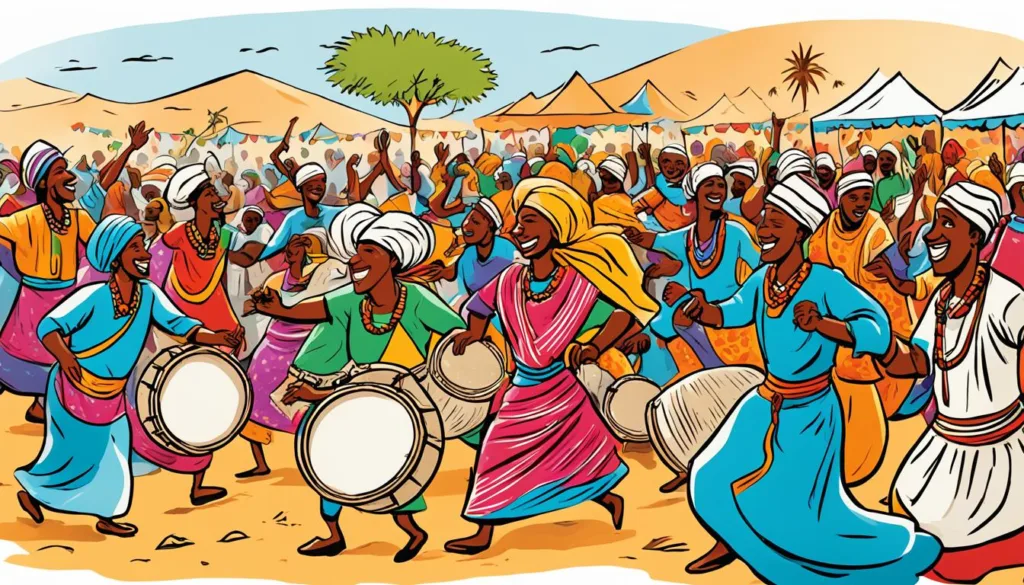
Each market day is a chapter in Niger’s cultural anthology. As the sun climbs higher in the sky, so does the fervor of the day’s trade, sewing the fabric of Nigerien society closer with each interaction. For outsiders looking in, taking part in these vivid assemblies becomes an education in the real, unvarnished rhythm of life in Niger.
Conclusion: Crafting Your Itinerary for a Niger Adventure
As your journey through this guide concludes, the essential elements for crafting your Niger itinerary should now be clear. Strategic travel planning plays a pivotal role in creating an unforgettable adventure. Consider the climatic patterns that sweep across Niger’s vast landscapes, choosing times when the Sahel’s warmth is more a caress than a scorch. The cultural mosaic of vibrant festivals awaits the well-timed traveler, serving as portals to the soul of this fascinating country.
Your Niger adventure promises to be as rich and varied as the terrain you’ll traverse and the customs you’ll witness. From the undulating sands of the Sahara to the bustling heart of Niamey, each destination is a piece of a grand puzzle. To truly immerse in the spirit of Niger, pay heed to the intertwining of heritage and horizons, participating in rites and daily rituals that afford a genuine connection with the land and its people.
Remember, the synthesis of nature’s grandeur and the pulsating cultural beat of Niger’s communities crafts an enduring narrative. Allow this narrative to guide your expedition through Niger, ensuring that each experience is met with presence and appreciation. With your compass thus set, you may embark, knowing that your travels are not merely a displacement in space, but a timeless voyage into the heart of Africa. Secure this framework of knowledge and let it steer your odyssey to ensure your time in Niger transcends the ordinary, etching itself into your memory as nothing less than an unforgettable adventure.
FAQ
What is the best time to visit Niger for ideal weather conditions?
The best time to visit Niger for favorable weather is from October to April. During these months, temperatures are more moderate, providing an ideal climate for exploring both the Sahara’s beauty and the vibrant culture of Niger.
How does Niger’s climate vary and what does it mean for travelers?
Niger has two main climate zones—the Sahara in the north and the Sahel in the south. Visitors should be aware of these variations to plan travel before extreme heat sets in during mid-year. Travelers should aim for cooler periods to enjoy the outdoor activities that Niger offers.
Why is it important to balance weather and cultural events when planning a visit?
Balancing weather comforts and cultural festivities ensures a rich travel experience to Niger. You get to enjoy the diverse traditional festivals and lively markets in the Sahelian south more comfortably outside the hot and dry peak of the harmattan winds.
What are the must-see destinations in Niger?
The Sahara Desert, especially the Tenere region, the historical city of Agadez, the Air Massif, and the capital city of Niamey are must-see places. Each offers unique landscapes and cultural experiences integral to the essence of Niger.
Can visitors participate in Niger’s traditional festivities and market life?
Yes, visitors can and are encouraged to immerse themselves in the nation’s cultural life. Traditional festivities are a window into the local culture, while the markets offer a chance to engage with the social and economic hub of Nigerien society.
What’s the overall best travel season to plan a vacation in Niger?
While cultural events are year-round, the overall best travel season for comfort, festival participation, and natural exploration in Niger spans from October to April, aligning mild weather with cultural vibrancy for an optimal experience.
How does the local weather influence daily activities in Niger?
The local weather significantly influences daily activities, as extreme heat can limit outdoor excursions. The cooler months facilitate a broader range of experiences, from enjoying the Sahara landscapes to exploring the local markets and festivals.
